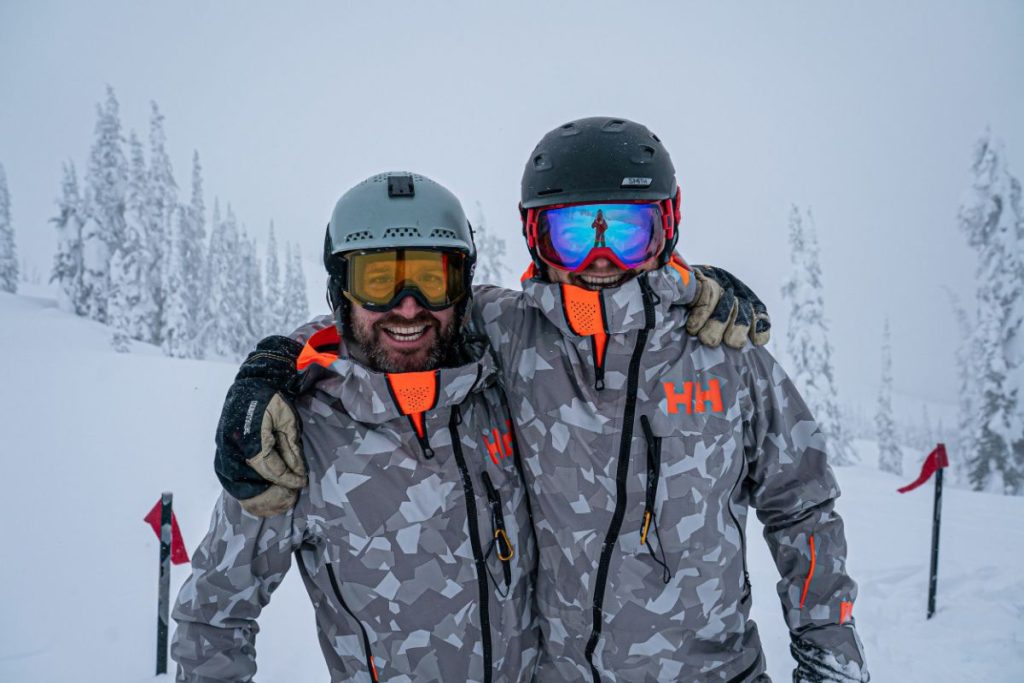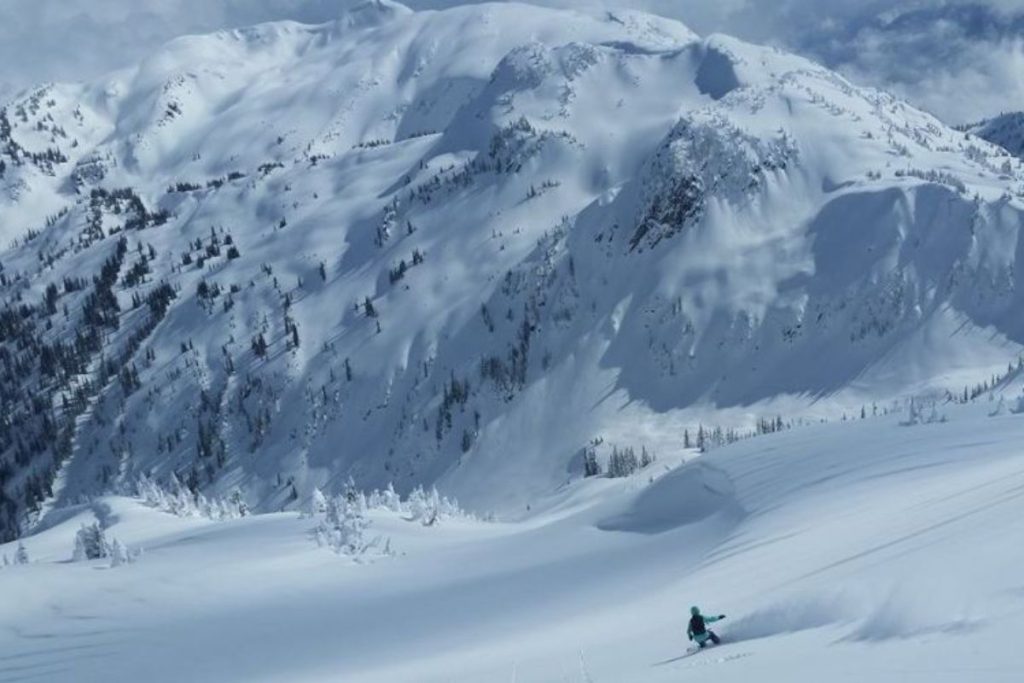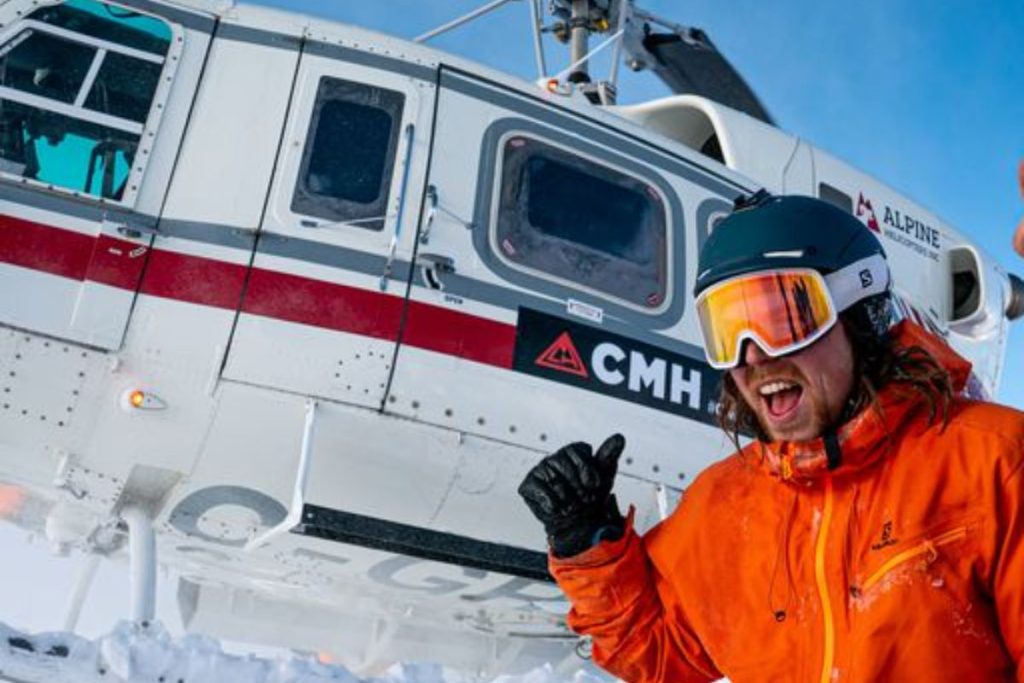When you embark on a helicopter skiing excursion, you will want to make sure that your ski fitness is where it should be. In this guide, we will walk you through some tips and tricks regarding fitness and trip preparation. We will also have a look at a few fantastic warm-up resorts that might be worth considering before your heli skiing adventure kicks off.
At Pure Powder, we go above and beyond to ensure that our customers are as prepared as possible for their helicopter skiing experiences – this includes the creation of a comprehensive ski fitness program, made with the assistance of a chiropractic expert (and keen skier). We aim to provide the ultimate skiing experience and, in order for our clients to enjoy the full extent of their adventure, a decent level of fitness is necessary.
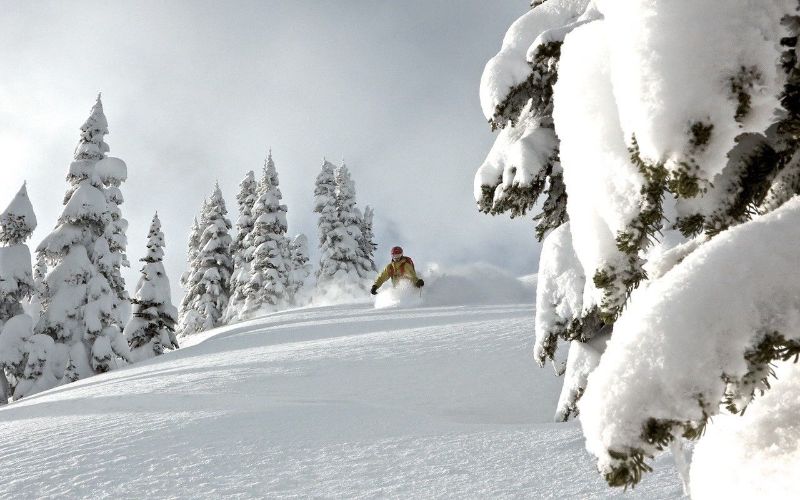
The Importance Of Being Ski Fit
Just so that there is no confusion, it is not necessary to be ultra-fit and marathon-ready to immerse yourself in a heli skiing excursion. We are just firm believers that the fitter you are, the more you will enjoy your trip, and be able to partake in all of the skiing activities that are thrown at you.
Whilst fitness is a crucial part of it and being at a decent level of fitness will certainly allow you to accomplish more while out on the slopes – you don’t need to alter your entire lifestyle to become ski fit. With that being said, let’s get into a few things that fitness will assist with:
1. Reduces The Risk Of Injury – Ensuring that your body is prepared for the exciting challenges that are part and parcel of a helicopter skiing adventure will bring down the chances of injury whilst in the backcountry. When your fitness levels are good, you are better prepared to tackle these challenges.
This is because being in good physical shape means that you are more likely to have improved control over your body – allowing you to make adjustments and successfully navigate some of the tougher terrain that you may face. Additionally, adequate fitness will help you avoid becoming fatigued. This is important because it is much easier to make simple miscalculations when your body is exhausted, and this is one of the major causes of injury when skiing.
2. Ski Fitness Will Help You Cope With The Altitude – As you can probably imagine, much of the skiing you will be doing will be at a higher elevation than you might be used to. The higher the altitude, the thinner the air, and the more challenging it becomes to exert yourself.
However, if you take the time to make sure that your fitness is where it should be, this should not be an issue. When your body is physically equipped for these conditions, you will be more than capable of effectively adapting to the higher altitudes. In fact, the greater your cardiovascular fitness is, the easier the entire experience becomes. We say this because your heart will then be able to properly oxygenate your muscles, which leads to enhanced performance and enjoyment on the slopes.
3. Make The Most Of The Experience – Helicopter skiing is the sort of experience that you will want to throw yourself into, without concerning yourself with thoughts of fatigue or exhaustion. When you are ski fit, you are able to head out for longer runs, conquer more difficult terrain, and generally feel more at ease with yourself while skiing.
In order to get the utmost from the exhilarating experience that is heli skiing, a good level of fitness will certainly help in this endeavour. We are sure that you want to avoid struggling to get in as many runs as you would like or finding it challenging to keep up with the group. Ski fitness allows you to tackle the slopes head-on and forge memories that will last a lifetime!
How To Get Ski Fit For Helicopter Skiing
Now that we have had a look at the crucial nature of preparing yourself physically for one of our excursions, allow us to walk you through some tips and tricks around ski fitness. We want to ensure that we cover all our bases when we offer our customers tips on their fitness, so we enlisted the help of Craig Mclean – who runs the Putney Chiropractic Centre in London. Basically, he knows his way around a fitness programme. You can find the full programme on our website under the “Trip Preparation” tab if you are interested.
Before we go any further, it is important to note that this training programme is designed for individuals who already have a significant level of fitness. If you have any doubts about whether or not you fall into this category, we advise that you consult with a medical practitioner. Now that the disclaimers are done and dusted, let’s jump into some of the information provided in the programme.
The Four Tenets Of Skiing Fitness
Contrary to popular belief, successful training for a skiing adventure is not only about leg strength and lower-body exercises. If you want to holistically approach the process and develop your fitness correctly, you need to improve strength throughout your whole body, not just in your legs. So, in order to develop your power, strength, and mobility, it helps to stick to these four essential demands:
- Core strength and development
- Agility
- Dynamic flexibility
- Strength training
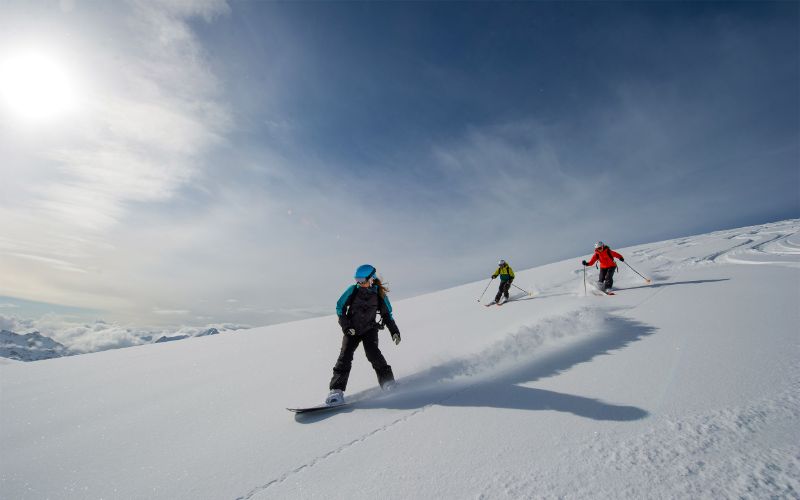
Core Training For Helicopter Skiing
This is arguably the most essential element of preparation regarding ski fitness. It is vital that you have good core strength and development so that you have a strong base to work from. Most of the movements that encompass good form involve fast, dynamic adjustments that start in your core. This is known as ‘moving from your centre’, and it helps to divert the stress from the limbs and promote greater core function. In our programme, one of the exercises that is spoken about most is single-leg core development.
Skiing involves a lot of quick direction changes that make these exercises extremely useful – single-leg training reduces the amount of surface area and cuts the body’s contact with the ground in half. We recommend an opposite leg and arm reach, a backwards lean, and any number of resistance exercises. This core training is perhaps the most beneficial for improving your ski fitness, and it will stand you in great stead when you head out on your helicopter skiing adventure!
Agility Training For Helicopter Skiing
As you know, skiing involves a good amount of agility, and this warrants the introduction of certain aerobic exercises. This is done best when performing agility work in an explosive way – meaning a short, intense burst of aerobic activity followed by a brief rest period.
There are many different methods you can choose from, but agility ladders, sprints, vertical hurdles, and similar training are some of the most effective. This kind of training will prepare your body for the skiing ahead, and as an added bonus, they should also improve your reaction time and general quickness.
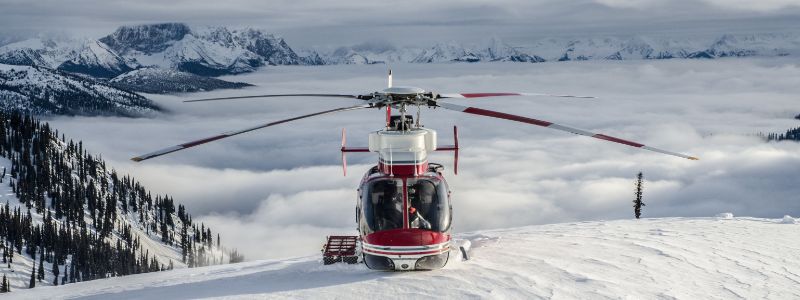
Flexibility Training For Helicopter Skiing
When backcountry skiing, it certainly pays to have a good level of flexibility. This will help you make some of the more complex movements and adjustments, but it also helps you avoid injury. In our programme, it is stated that dynamic stretching is the safest and most effective method of developing flexibility and ski fitness. A few examples of exercises to use would be star jumps, leg kicks, hip swings, and dynamic hip abduction and adduction.
We recommend that five minutes of each ski fitness training session should be dedicated to flexibility training. In order to optimise these exercises and get the most from them, we suggest performing aerobic training just before – this readies your body for the dynamic stretching ahead.
Strength Training For Helicopter Skiing
Finally, we have strength training and development – this deals with growing your general strength levels so that you can progress onto more complex training. Strength training for ski fitness is not all that different to a typical workout one might do at the gym. It involves fundamental large muscle movements like lunges, squats, press-ups, pull-ups, deadlifts, and other bodyweight resistance exercises.
These workouts will improve your ability to perform more complex training and you should try to do them between four to six weeks in the build-up before your helicopter skiing excursion. Of course, this does depend on where your fitness level is before beginning training. We encourage you to check out our full advanced skiing fitness training programme. There, you will find a comprehensive breakdown of the workouts, stretches, and exercises you can do to prepare you for your helicopter skiing adventure.
Recommended Warm-Up Resorts
Whilst it is incredibly helpful to do these workouts and stimulate your fitness levels from home or at the gym, ultimately, the best way to get your skiing fitness where it should be is to simply go skiing. This is why we often recommend that our customers visit a warm-up ski resort before they head out for their heli skiing trip. Let’s have a look at some of the resorts we suggest visiting:
Whistler
Whistler Ski Resort has been rated number one in North America, for great reason too. It boasts one of the largest skiable areas in the world, with more than 8,100 acres! This isn’t just any standard ski terrain either, it includes a bit of everything – this makes it ideal for skiers of all levels, from beginners to seasoned veterans.
The mountain scenery is tough to beat, even for British Colombian standards. For those who are fond of après ski activities, there is a European-styled village at the base of the mountains that features plenty of fantastic bars and restaurants. However, it is crucial to note that Whistler is not directly on the way to any of the CMH lodges, but it is perfect for an extended warmup.
Banff
Banff is a busy ski town with an impressive variety of terrain to choose from. As a result of its elevation, Banff receives some of the finest powdered snow anywhere in British Columbia – plus, it has an average of 9m annual snowfall. We recommend the Moose Hotel because of its intimate and cosy suites, as well as its close vicinity to downtown Banff.
This is a perfect location for those travelling to the following CMH lodges: Adamants, Bobbie Burns, Bugaboos, and Valemount. Its comparative proximity to these great lodges makes it the ideal warmup skiing experience. If you decide on Banff, we always like to recommend that our customers explore the ice waterfalls at the national park and grab a bite to eat at the Sky Bistro. We are sure you won’t be disappointed!
